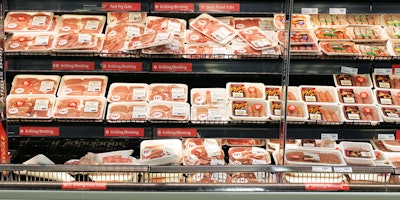
 Koen Jacobs
Koen JacobsMeat producers face tremendous pressure due to tight product margins and external factors such as promotions and changing consumer requirements. In order to stay ahead of the competition and strengthen customer loyalty, meat producers must place a stronger emphasis on smarter planning. But what is keeping them from planning efficiently?
Key Challenges:
1. What you see may not be what you get
One of the key challenges in meat production is supply uncertainty. You never know if you will get the exact number of animals ordered. The size and weight of the animals may also differ. Your planners must be able to identify and address the gap between forecasted and actual volumes. Given the capacity constraints of individual plants, they have to match the demand for individual cuts with supply. Optimizing the use of products to match demand in the meat sector is a complex undertaking, but it can also be the key to profit margins.
2. Too many SKUs to monitor
Meat producers don’t operate brands of their own. They instead supply products to established retail brands, with each brand requiring customized packaging and a wide array of products, flavors and meat choices. The diversity of the product portfolio inevitably ends up increasing the SKU count.
3. The right customers need the right product mix
Since retailers are eager to avoid revenue declines that result from gaps in inventory, they are making order fulfillment rates a key factor in assessing the quality of a relationship with a meat producer. Unfortunately, this also means that retailers will not hesitate to go elsewhere if a meat producer fails to supply the required order during peak demand points or promotional initiatives. This ends up making customer order fulfillment a key KPI for meat producers.
4. Animal welfare and allergens
Consumers are now becoming more aware of where their meat is coming from. Their concerns are not just about how the animals have been treated, but also if they have been fed on safe, appropriate feed. Animal welfare is now a factor of great importance to meat producers, requiring them to pay more attention to the details. For instance, corn-fed products should be delivered only to certain customers and higher welfare chicken could sometimes be used for standard welfare products, but not the other way around.
5. Shelf life uncertainty
The shelf life of meat products changes throughout the production process. For instance, fresh meat expires in two days, but its shelf life can be doubled through cooking. Meat producers will take this opportunity to enhance the flavor of the meat through salting or smoking, further extending shelf life by a few more days.
6. Complex intercompany logistics
Intercompany transport is an essential part of meat production as there are multiple types of factories involved in the supply chain: Some plants only cut meat while others produce convenience products. A plant that cuts meat has two options — it can send products directly to customers or to the convenience food plant for further processing to create higher margin products.
7. Poor visibility leads to poor decisions
A lack of cross-functional visibility can result in unfulfilled orders, shortage of raw materials and a stressful time for your planners. Planning methods that depend on spreadsheets increase the likelihood of an inconsistent planning approach in the various stages of your supply chain. This likelihood is magnified when different plans are used in different plants, making it impossible to have one single source of truth. Meat producers require a single, integrated platform for full visibility of the supply chain to make the right decisions.
The agility to stay ahead of the competition comes with a fully integrated solution with the flexibility and power to handle all stages of the supply chain ― from production planning to transportation scheduling. Greater visibility across the entire supply chain is the basis for better planning and prevention of wastage.






















